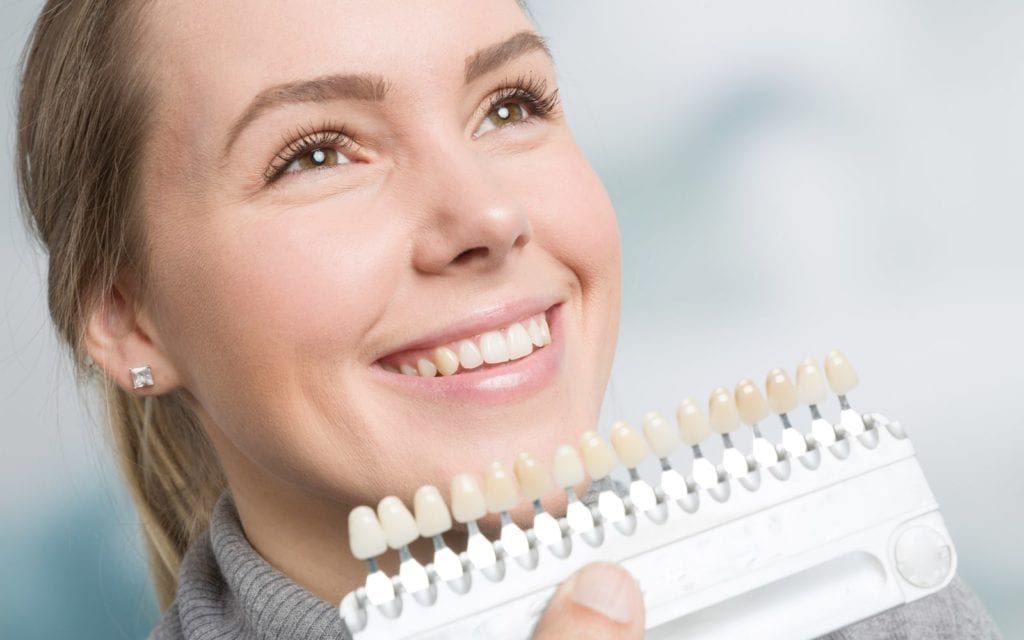Dentists working to restore smiles are considered a highly technical skill due to understanding materials, surgical methods, and the physiology of their patient’s teeth. However, dentistry is more than just a medical necessity – it is also an art form. Restoring smiles with restorations like veneers, implants, and crowns often takes an artistic eye to match the tones of your restorations to your natural teeth. Often, when patients need restorations, it’s easy to assume that each person will get the same matching shade when replacing their teeth, but in fact, that is not the case.
Restorative dentistry is all about giving people smiles that are natural to view because each person’s teeth, just like DNA, have a unique set of genetic components that define those teeth from others. To make restorations that look natural and function just as well as healthy teeth, dentists will have various tools up their sleeves to ensure that your dental work is professional and satisfactory.
The Art of Tooth Color Matching
Dentists require years of medical training to make sure that each treatment is successful, and that includes learning how to match the tones of your teeth to the restorations you need. One fact every dentist knows is that even the healthiest teeth aren’t white. That’s because our teeth all contain the genetic components that originate from our parents, grandparents, and family members before us that dictate what dental diseases we’ll be most vulnerable to, how early we’ll lose our teeth, and of course, what color variances our teeth will have. Some people will have teeth that have more yellow tones, others will have more translucent tones, and some will even have a closer matching white color that’s often seen in cosmetic treatment.
Pure, white teeth are a product of the beauty industry, but in reality, even teeth whitening treatments will not provide that translucent white color that’s often seen in billboards and magazines. For dentists, the aesthetic element involves creating natural-looking smiles works to create restorations that match your complexion. Matching to your tooth shade involves numerous techniques to meet those requirements and give you a smile that looks and feels natural. The art of shading often comes down to years of practice in the industry, but understanding shade comes down to these core concepts:
- Teeth aren’t truly white. Most often, they are a color combination of gray, red, yellow, and white. When dentists and dental technicians fabricate restorations, they often have to measure the variances between these colors and focus on multiple elements to create better accuracy when printing and fabricating teeth.
- Hue: Hue is one of the elements that reference the red, yellow, gray, and white hues present in teeth. When measuring the hue of teeth, the overall white color would need to also be measured by its undertones. For instance, if a person’s natural tooth color has more yellow tones, your dental technician will measure the yellow hue mixture and factor it into the restoration.
- Value: Value refers to how dark or light the shade is in comparison to other shades. This refers to how bright the tooth appears when viewed from a gray background. To test value, dentists often incorporate gray bibs to create a neutral background surface for a more accurate estimate. The gray bib allows our eyes to adjust to the natural color by allowing us to see through 5 to 7-second intervals.
- Chroma: Chroma is the saturation of the hue, and while light refers to how bright or dull a color appears, saturation refers to the intensity of the color. When viewed with a neutral gray background, your dentist will match whether your natural teeth appear more translucent or opaque.
How Dentists Design Your Natural-Looking Smile
Fabricating your restorations takes both technical skill and an artistic eye. Depending on the dentist you go to, either your primary dentist will work to fabricate your restoration, or they will create an impression of your teeth and send those impressions to a dental technician. Dental technicians often specialize in fabricating restorations with 3D printers, CAM/CAD technology, and other manufacturing methods. When you begin your restoration treatment, your dentists will perform the following:
- First, your dentist will discuss with the patient their expectations, including what treatments they would like, how they imagine their teeth and other various factors in regards to their restorations.
- Next, a pre-operative impression will be taken either by using an alginate molding material or digitally using an intraoral scanner. These impressions will gather all the data relevant to the patient’s teeth and allow either the dentist or the dental technician to follow when designing the restoration. Photographs may also be taken as references.
- Your dentist will either prepare the restoration at their office or send the impression data off to their dental technician to fabricate the restoration. From here, measuring value, hue, and chroma is part of the fabrication process.
- Once the fabrication process is complete, your dentist will have your restoration ready and will be placed to create clean, matching results.
If you are ready to receive a dental restoration that matches your teeth, contact your dental provider and schedule your next visit with them today!




